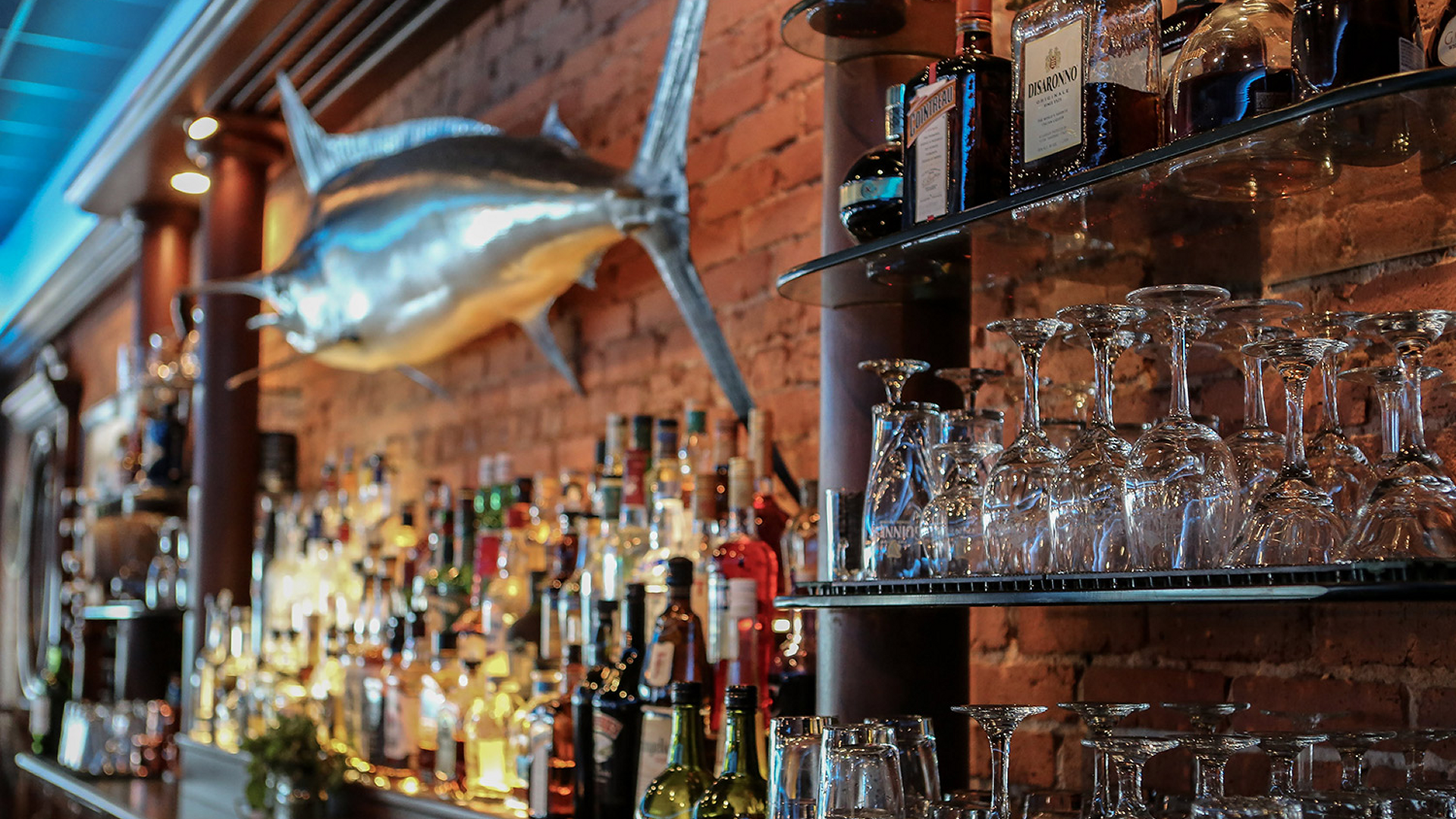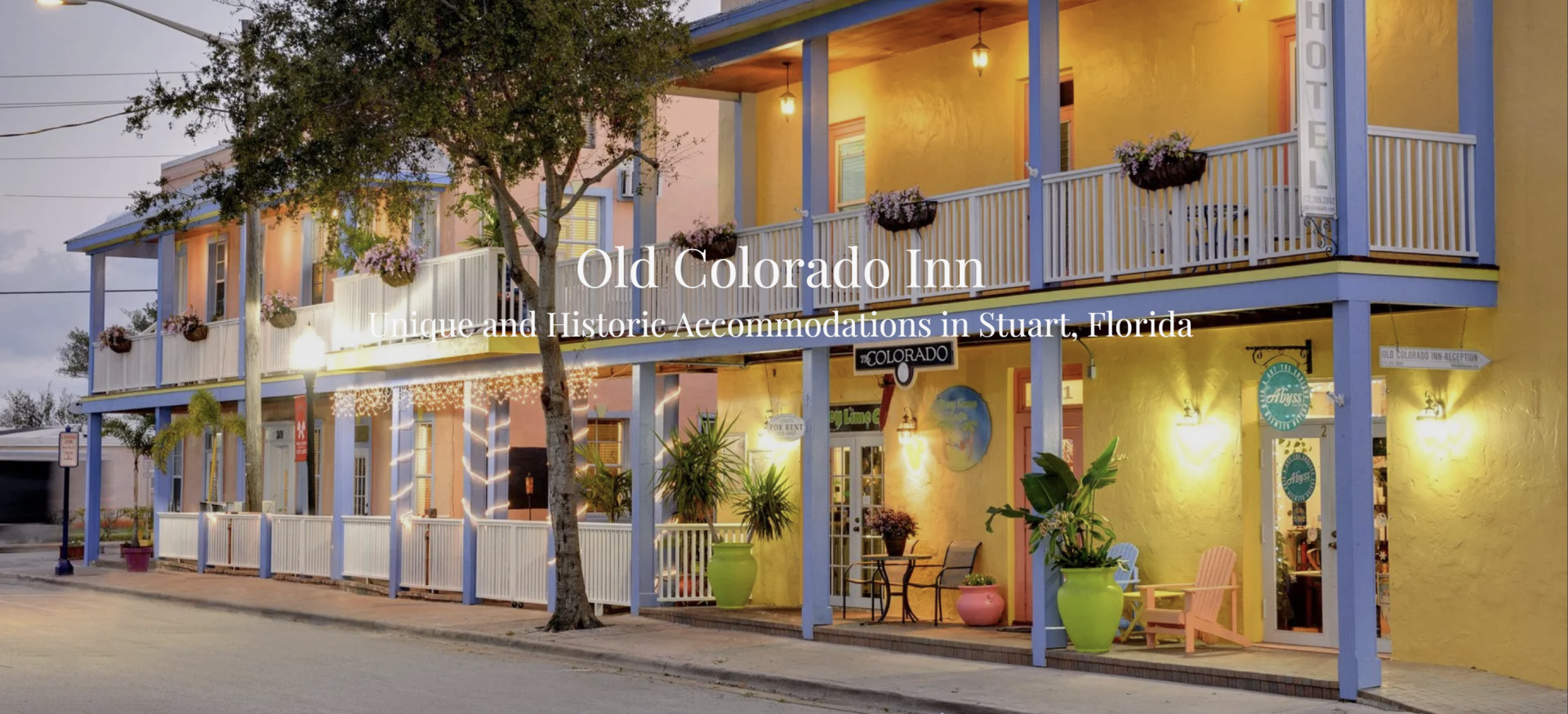Stuart, Florida.
Lat. 27.192223 | Long. -80.243057
“Sailfish Capital of the World”
Stuart and Martin County got in on the sailfish action early on in its history. It was January 1938 and Stuart News editor and visionary Ernie Lyons was hosting a half dozen sports writers from some of the nation’s largest newspapers. He had them out fishing aboard the Whiticar Fleet with Captains Add Whiticar and sons Jack, Johnson and Curt. The small fishing fleet based in Stuart had tallied over 1,000 sailfish catches in a little less than a week. One of the columnists went back home and penned a phrase that read something like: “You might as well call that place Stuart the world capital of sailfish.” Visit Discover Martin County.
-
Stuart, Florida, has a rich history that reflects its development from a small settlement to a vibrant community. Located on Florida's Treasure Coast, Stuart is the county seat of Martin County. Here's an overview of its historical development:
Early History
Indigenous Peoples: Before European settlers arrived, the area around Stuart was inhabited by the Ais and Jaega Native American tribes. These indigenous groups lived off the land, relying on fishing, hunting, and gathering.
Spanish Exploration: The region was explored by Spanish explorers in the 16th century, but it remained largely undeveloped by European settlers for several centuries.
19th Century
Early Settlers: The first non-indigenous settlers arrived in the mid-19th century. By the 1870s, small communities began to form along the St. Lucie River, which provided a natural harbor and access to inland areas.
St. Lucie Settlement: Originally, the area was known as St. Lucie, named after the nearby river. The settlers were primarily involved in farming, fishing, and trading. The population was small, and the community was fairly isolated.
The Arrival of the Railroad (1892)
Railroad Impact: The Florida East Coast Railway, developed by Henry Flagler, reached the area in 1892. This was a pivotal moment in Stuart's history, as it connected the community to other parts of Florida and brought increased commerce and population growth.
Name Change to Stuart: The town was renamed "Stuart" in 1895, in honor of Homer Hine Stuart, Jr., a prominent local landowner and one of the founders of the town.
Early 20th Century
Incorporation: Stuart was officially incorporated as a city in 1914. During this period, the town began to develop more structured governance and infrastructure.
Boom and Bust: Like much of Florida, Stuart experienced a land boom in the 1920s, followed by a bust during the Great Depression in the 1930s. The town's economy, heavily reliant on agriculture and fishing, was hit hard, but it slowly recovered.
Mid to Late 20th Century
World War II: During World War II, the U.S. Navy established a training base in Stuart, which brought a temporary influx of people and economic activity.
Post-War Growth: After the war, Stuart began to grow steadily. The development of new roads, the expansion of tourism, and the attraction of retirees contributed to the area's growth.
Martin County Seat: In 1925, Stuart became the county seat when Martin County was created, separating it from Palm Beach County. This solidified Stuart's importance in the region.
Modern Era
Environmental Conservation: In recent decades, Stuart has been recognized for its efforts to preserve the natural environment, particularly the St. Lucie River and nearby ecosystems. The town is known as the "Sailfish Capital of the World" due to its excellent fishing opportunities.
Tourism and Culture: Stuart's charming downtown, historic buildings, and cultural attractions, such as the Elliott Museum and the House of Refuge Museum, have made it a popular destination for tourists. The town is also known for its annual events, like the Stuart Air Show and the Stuart Boat Show.
Recent Development: While maintaining its small-town charm, Stuart has continued to grow, with new residential developments, commercial areas, and infrastructure improvements. The community remains a blend of historical preservation and modern amenities.
Stuart's history is marked by its transformation from a small, isolated settlement to a thriving coastal town with a strong sense of community and a commitment to preserving its natural and historical heritage.
The historic charm of this downtown area is undeniable, with the picturesque St. Lucie River just steps away from more than 50 locally-owned shops, restaurants, and galleries. History is everywhere, from turn-of-the-century buildings to the Feed Store Museum, all just a short stroll from the Riverwalk boardwalk that stretches from Sunset Bay Marina’s docks to the historic homes of Seminole Street.
This coastal community is always buzzing with activity, offering live entertainment year-round at the beautifully restored Lyric Theatre, the Riverwalk Stage, and unique venues throughout downtown. With craft and art festivals, along with seasonal holiday events, there's something fun for everyone to enjoy.

Sportfishing Charters
The mission of the Historical Society of Martin County is to preserve, collect, and share the rich history of the Treasure Coast. They strive to offer engaging, diverse, and relevant exhibits and programs for visitors, ensuring their museums remain dynamic, responsive, and collaborative community hubs. The Society aims to foster economic growth and continually uphold its reputation as a source of pride for the community.
George W. Parks General Merchandise Store
The museum is housed in a wooden building constructed from Dade County pine, one of the most durable wood varieties available. Built in 1901, it features a vernacular architectural style with a classical pioneer false-front and a gabled tin roof. Originally named the George W. Parks General Merchandise Store, it stands as a historic landmark in downtown Stuart, Florida, along the St. Lucie River, approximately 25 miles north of West Palm Beach. As one of the area's earliest commercial buildings, it remains a key piece of local history.

The Black Marlin
With 27 years of experience in the Food and Beverage industry, including his time in the cruise ship sector and as the former owner of Stuart's renowned Jolly Sailor Restaurant, Bob Davis knows what it takes to create a memorable dining experience.
Together with his wife Tracy, Bob envisioned Sailor’s Return, one of South Florida’s most exciting new restaurants.
This 8,000-square-foot, 220-seat establishment, featuring two bars, is located at Sunset Bay Harbour and Marina—one of South Florida’s premier waterfront destinations.
The experienced executive leadership team at La Grande Martier is dedicated to fostering a unique and collaborative culture for their staff. Their team members come from diverse backgrounds and locations, with many starting their careers in restaurants at the age of 14 or 15. Despite their varied experiences, they all share a common passion for consistently providing exceptional food, drinks, and service.

All the sails they use are 100% recycled, sourced from sailors and sail-lofts, then sorted and carefully identified. Their creative process contrasts sharply with traditional fashion and decor collections: they begin with the reclaimed material and design new products around it. Through this upcycling approach, they define the unique spirit of their collections.
Each bag and most decor items feature a certificate of origin stitched inside, detailing the sailcloth’s history, including the sail number and the number of products made from that sail.















